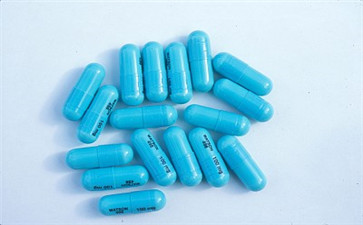乙肝慢性感染与肝癌发生密切相关,我国肝癌患者绝大多数感染慢性乙肝,目前乙肝引发肝癌的机制普遍认为是慢性炎症、病毒X蛋白等因素。
中科院微生物研究所孟颂东课题组李长菲、王彦中等人研究发现,乙肝病毒mRNA也可能参与慢性乙肝感染向肝癌的转化,大量表达冗余的病毒mRNA与肝细胞中的小RNA miR-122结合,以“海绵”吸附的方式抑制miR-122,进而导致miR-122靶基因PBF(PTTG1 binding factor)的上调,促进肝细胞癌变和生长。
众所周知,mRNA的功能主要是翻译蛋白,病毒mRNA还可通过模式识别激活天然免疫。李长菲、王彦中等人的研究提示mRNA的新作用机制,即通过与宿主小RNA互作,可能直接参与肿瘤发生。
上述研究已在线发表在Journal of Virology上,这是该课题组2012年发表的第三篇相关论文,前两篇论文研究炎症因子对miR-122水平的调节及miR-122对乙肝病毒复制的抑制,分别发表在Journal of Virology和Hepatology。以上三篇研究论文勾画出了乙肝感染引发肝癌的新机制,病毒因子(mRNA)和慢性炎症下调肝细胞中的关键小RNA miR-122,miR-122的下调一方面使病毒复制增强,另一方面活化肿瘤基因PBF/PTTG1从而引发肝癌,提示miR-122可作为治疗乙肝及肝癌的靶点。(生物谷Bioon.com)
doi: 10.1128/JVI.02831-12 PMC:PMID:

HBV mRNAs-mediated miR-122 inhibition up-regulates PTTG1-binding protein which promotes HCC tumor growth and cell invasion
Changfei Li1, Yanzhong Wang1, Saifeng Wang1, Bo Wu1, Junli Hao1, Hongxia Fan1, Ying Ju1, Yuping Ding2, Lizhao Chen1, Xiaoyu Chu1, Wenjun Liu1, Xin Ye1 and Songdong Meng1,*
As the most abundant liver-specific microRNA, miR-122 is involved in diverse aspects of hepatic function and neoplastic transformation. Our previous study showed that miR-122 levels are significantly decreased in hepatitis B virus (HBV)-infected patients, which may facilitate viral replication and persistence. In this study, we provide evidence that all HBV mRNAs harboring a miR-122 complementary site act as sponges to bind and sequester endogenous miR-122, indicating that the highly redundant HBV transcripts are involved in HBV-mediated miR-122 suppression. We next identified pituitary tumor-transforming gene (PTTG1)-binding factor (PBF) as a target of miR-122 and demonstrated that HBV replication causes an obvious increase in PBF levels. Furthermore, we observed that the miR-122 levels were decreased and PBF was up-regulated in chronic hepatitis B (CHB) and hepatocellular carcinoma (HCC). Over-expression and knock-down studies both revealed that PBF enhances proliferation and invasion of HCC cells, and silencing PBF resulted in a dramatic reduction of HCC tumor growth in vivo. Mechanistic analysis demonstrated that PBF interacts with PTTG1 and facilitates PTTG1 nuclear translocation, subsequently increasing its transcriptional activities. Therefore, we identified a novel HBV mRNAs-miR-122-PBF regulatory pathway that facilitates malignant hepatocyte growth and invasion in CHB, which may contribute to CHB-induced HCC development and progression. Our work underscores the reciprocal interplay of host miRNA sequestration and depletion by viral mRNAs, which may contribute to chronic infection related cancer.
(责任编辑:jie.jiang)
分享到:









发表评论 取消回复